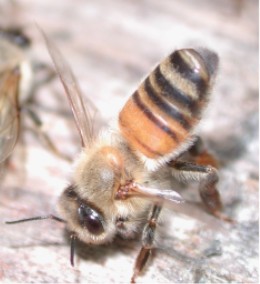
Heterosexuality is romantic attraction, sexual attraction or sexual behavior between people of the opposite sex or gender. As a sexual orientation, heterosexuality is "an enduring pattern of emotional, romantic, and/or sexual attractions" to people of the opposite sex; it "also refers to a person's sense of identity based on those attractions, related behaviors, and membership in a community of others who share those attractions." Someone who is heterosexual is commonly referred to as straight.

Sexual orientation is an enduring personal pattern of romantic attraction or sexual attraction to persons of the opposite sex or gender, the same sex or gender, or to both sexes or more than one gender. Patterns are generally categorized under heterosexuality, homosexuality, and bisexuality, while asexuality is sometimes identified as the fourth category.

The relationship between biology and sexual orientation is a subject of on-going research. While scientists do not know the exact cause of sexual orientation, they theorize that it is caused by a complex interplay of genetic, hormonal, and environmental influences. However, evidence is weak for hypotheses that the post-natal social environment impacts sexual orientation, especially for males.

A pheromone is a secreted or excreted chemical factor that triggers a social response in members of the same species. Pheromones are chemicals capable of acting like hormones outside the body of the secreting individual, to affect the behavior of the receiving individuals. There are alarm pheromones, food trail pheromones, sex pheromones, and many others that affect behavior or physiology. Pheromones are used by many organisms, from basic unicellular prokaryotes to complex multicellular eukaryotes. Their use among insects has been particularly well documented. In addition, some vertebrates, plants and ciliates communicate by using pheromones. The ecological functions and evolution of pheromones are a major topic of research in the field of chemical ecology.

Non-lethal weapons, also called nonlethal weapons, less-lethal weapons, less-than-lethal weapons, non-deadly weapons, compliance weapons, or pain-inducing weapons are weapons intended to be less likely to kill a living target than conventional weapons such as knives and firearms with live ammunition. It is often understood that unintended or incidental casualties are risked wherever force is applied, however non-lethal weapons minimise the risk of casualties as much as possible. Non-lethal weapons are used in policing and combat situations to limit the escalation of conflict where employment of lethal force is prohibited or undesirable, where rules of engagement require minimum casualties, or where policy restricts the use of conventional force. However, these weapons occasionally cause serious injuries or death due to allergic reactions, improper use and/or other factors; for this reason the term "less-lethal" has been preferred by some organizations as it describes the risks of death more accurately than the term "non-lethal", which some have argued is a misnomer.

Sexual attraction is attraction on the basis of sexual desire or the quality of arousing such interest. Sexual attractiveness or sex appeal is an individual's ability to attract other people sexually, and is a factor in sexual selection or mate choice. The attraction can be to the physical or other qualities or traits of a person, or to such qualities in the context where they appear. The attraction may be to a person's aesthetics, movements, voice, or smell, among other things. The attraction may be enhanced by a person's adornments, clothing, perfume or hair style. It can be influenced by individual genetic, psychological, or cultural factors, or to other, more amorphous qualities. Sexual attraction is also a response to another person that depends on a combination of the person possessing the traits and on the criteria of the person who is attracted.

Various non-human animal species exhibit behavior that can be interpreted as homosexual or bisexual. This may include same-sex sexual activity, courtship, affection, pair bonding, and parenting among same-sex animal pairs. Various forms of this are found in every major geographic region and every major animal group. The sexual behavior of non-human animals takes many different forms, even within the same species, though homosexual behavior is best known from social species.
Body odor or body odour (BO) is present in all animals and its intensity can be influenced by many factors. Body odor has a strong genetic basis, but can also be strongly influenced by various factors, such as sex, diet, health, and medication. The body odor of human males plays an important role in human sexual attraction, as a powerful indicator of MHC/HLA heterozygosity. Significant evidence suggests that women are attracted to men whose body odor is different from theirs, indicating that they have immune genes that are different from their own, which may produce healthier offspring.

Fraternal birth order, also known as the older brother effect, has been correlated with male sexual orientation, with a significant volume of research finding that the more older brothers a male has from the same mother, the greater the probability he will have a homosexual orientation. Ray Blanchard and Anthony Bogaert first identified the association in the 1990s and named it the fraternal birth order effect. Scientists have attributed the effect to a prenatal biological mechanism, since the association is only present in men with older biological brothers, and not present among men with older step-brothers and adoptive brothers. The mechanism is thought to be a maternal immune response to male fetuses, whereby antibodies neutralize male Y-proteins thought to play a role in sexual differentiation during development. This would leave some regions of the brain associated with sexual orientation in the 'female typical' arrangement – or attracted to men. Biochemical evidence for this hypothesis was identified in 2017, finding mothers with a gay son, particularly those with older brothers, had heightened levels of antibodies to the NLGN4Y Y-protein than mothers with heterosexual sons.
The sexually dimorphic nucleus (SDN) is an ovoid, densely packed cluster of large cells located in the medial preoptic area (POA) of the hypothalamus which is believed to be related to sexual behavior in animals. Thus far, for all species of mammals investigated, the SDN has been repeatedly found to be considerably larger in males than in females. In humans, the volume of the SDN has been found to be 2.2 times as large in males as in females and to contain 2.1 times as many cells. The human SDN is elongated in females and more spherical in males. No sex differences have been observed in the human SDN in either cell density or mean diameter of the cell nuclei. The volume and cell number of the human SDN considerably decreases with age, although the decrease in cell number is both sex and age-specific. In males, a substantial decrease in the cell number of the human SDN was observed between the age of 50–60 years. Cell death was more common in females than males, especially among those older than 70 years of age. The SDN cell number in females can drop to 10-15% of that found in early childhood.

Androphilia and gynephilia are terms used in behavioral science to describe sexual orientation, as an alternative to a gender binary homosexual and heterosexual conceptualization. Androphilia describes sexual attraction to men and/or masculinity; gynephilia describes the sexual attraction to women and/or femininity. Ambiphilia describes the combination of both androphilia and gynephilia in a given individual, or bisexuality.

The relationship between the environment and sexual orientation is a subject of research. In the study of sexual orientation, some researchers distinguish environmental influences from hormonal influences, while other researchers include biological influences such as prenatal hormones as part of environmental influences.

Sexual orientation is an enduring pattern of romantic or sexual attraction to persons of the opposite sex or gender, the same sex or gender, or to both sexes or more than one gender, or none of the aforementioned at all. The ultimate causes and mechanisms of sexual orientation development in humans remain unclear and many theories are speculative and controversial. However, advances in neuroscience explain and illustrate characteristics linked to sexual orientation. Studies have explored structural neural-correlates, functional and/or cognitive relationships, and developmental theories relating to sexual orientation in humans.

An odor or odour is caused by one or more volatilized chemical compounds that are generally found in low concentrations that humans and many animals can perceive via their sense of smell. An odor is also called a "smell" or a "scent", which can refer to either an unpleasant or a pleasant odor.

Bisexuality is a romantic or sexual attraction or behavior toward both males and females, to more than one gender, or to both people of the same gender and different genders. It may also be defined to include romantic or sexual attraction to people regardless of their sex or gender identity, which is also known as pansexuality.
Odour is sensory stimulation of the olfactory membrane of the nose by a group of molecules. Certain body odours are connected to human sexual attraction. Humans can make use of body odour subconsciously to identify whether a potential mate will pass on favourable traits to their offspring. Body odour may provide significant cues about the genetic quality, health and reproductive success of a potential mate.

The hormonal theory of sexuality holds that, just as exposure to certain hormones plays a role in fetal sex differentiation, such exposure also influences the sexual orientation that emerges later in the individual. Prenatal hormones may be seen as the primary determinant of adult sexual orientation, or a co-factor with genes, biological factors and/or environmental and social conditions.

Androstadienol, or androsta-5,16-dien-3β-ol, is a 16-androstene class endogenous steroid, pheromone, and chemical intermediate to several other pheromones that is found in the sweat of both men and women.
Ivanka Savic Berglund is a Serbian-Swedish neuroscientist, a professor of neurology and chief physician at the Karolinska Institute in Sweden, and an adjunct professor in the neurology department at the University of California, Los Angeles (UCLA). Savic is best known for her neurophysiology and neuroimaging research relating to epilepsy, sex differences, sexual orientation, gender identity, brain processing of odors and pheromones, and the effects of chronic stress on the brain. Savic is a co-founder of the Stockholm Brain Institute and the editor of several medical books.





